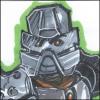
ALL PICTURES HAVE BACKGROUND INFORMATION. HOVER OVER PICTURES TO READ.
Day Two
| | | |
Day Three
| | | |
| | |
Day Four
| | | |
Day Five
| | | |
| | | |
Day Six
| | |
Day Seven
| | | |
| | | |
| |
- Read more...
- 3 comments
- 325 views

